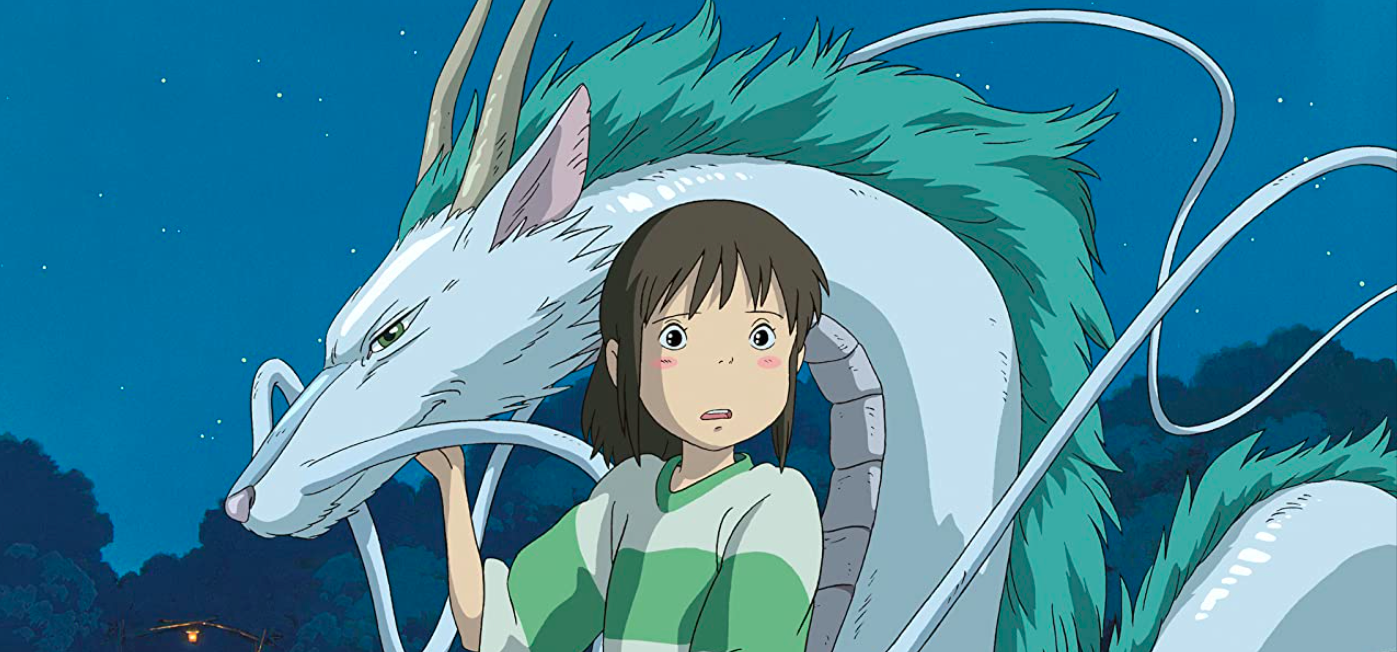I watched Spirited Away for the first time as a 20-year-old, during the beginning stages of the COVID-19 pandemic when the harsh reality of travel restrictions, social distancing, and stay-at-home orders were truly setting in. Obviously, Studio Ghibli, the film’s production studio, has staked itself permanently in the annals of cinema history; Hayao Miyazaki remains a name renowned around the world and Spirited Away became the first non-English winner of the Academy Award for Best Animated Feature. Needless to say, the magnificence of the film and its creators have not gone unnoticed since 2001, when it was first released. However, viewing a piece of art with a sense of philosophical presentism can lead to new interpretations and levels of critical analysis. Therefore, when I pulled out my laptop in the middle of the summer, the latest death toll numbers constantly flashing in media headlines, new interpretations of Spirited Away (particularly in regard to the way that audiences view Chihiro) abounded in my mind.
Professional and casual critics alike describe Chihiro, the 10-year-old protagonist of the story, as bratty, sullen, and stubborn, along with a litany of other reductive adjectives. I resented the reviewers who did so after watching the film, but chalked it up to a fundamental underestimation of female characters in general. However, after watching it in tandem with the backdrop of the world’s collective COVID-19 trauma, I felt more passionate than ever about the way Chihiro is represented in Spirited Away and more frustrated than ever about the way people misunderstand her character.
Chihiro becomes worried when her parents begin to pig out—literally—at the mysterious food stand, anxiously asking them to leave when she feels unsettled. Before that, the short-cut route her father takes through a forest sits wrong with her. And even before that, in the opening scenes of the film, viewers are introduced to her looking upset about having to move away from her friends and home. Why is it that her reactions to situations, ultimately valid and justified, immediately lead to such negative characterization labels? Fundamentally, the issue represents an intersection between film and societal issues affecting perceptions of women and girls. However, that lies outside the scope of this analysis, which instead focuses on the overall reassurance and validity of certain feelings, especially for viewers undergoing a traumatic experience like a pandemic. It’s not necessarily considered heroic or likeable to be anxious, sullen, or “bratty,” but it is certainly human—and isn’t that all one can be in such life-changing situations?
Ultimately, Chihiro is relatable, an important trait for a main character in any narrative. Consumers look to stories to find bits of themselves and their emotions. I found strength and a sense of being understood within Chihiro, despite being an entire decade older than her and Miyazaki’s intended audience. Like Chihiro, I feel the often-debilitating anxiety of being thrown into an unimaginable situation, an urge to run and hide—as she does when she realizes she’s becoming see-through the longer she remains in the spirit world—constantly in the back of my mind. Many times I have wanted to shout at the people who continue to violate stay-at-home restrictions that they should leave those crowded spaces, and I am sometimes met with the eye-rolling that Chihiro gets from her own parents.
However, with the lows also come the highs. Chihiro resolves to fight through the conflict of being thrown into the fantasy world of Yubaba’s bathhouse for spirits. Current-day viewers, sitting in quarantine for months, are transported with her, out of the mundane and into the fantastic. Imagine, for young girls around the world, the power of seeing a familiar face in a magical world: they can be enabled to go through the process of conflict and emotional resolution through following Chihiro’s lead, as I was able to upon my first viewing of the film. Historic pandemic or not, Chihiro’s character is a model of young female resistance. It just so happens that living through COVID-19 increases audiences’ desire for seeing this sort of representation and being teleported to another world.
In most of his films, Miyazaki refuses to shy away from intense themes and iconography, including focusing his narratives on young characters. Spirited Away is no different in that it includes commentary on environmental issues, western consumerism, and more. Topics like these aren’t typically explored in children’s animation films, but Spirited Away, with Chihiro as its main character, deliberately delves into these sociopolitical issues. Today, within the context of the pandemic, political upheaval, and more, children and adults alike have been forced to reckon with the dangerous imperfections of the world. And although society tends to chalk up these emotions to being weak and in some senses “feminine,” they are undeniably part of the human experience, which Miyazaki masterfully demonstrates through Chihiro’s characterization. After being carried into the spirit world with Chihiro, therefore, away from the mental tolls of quarantine and COVID, viewers return to the real world knowing that it’s actually quite alright to want to leave reality for a little while. They are not weak.



Great….Keep’em coming